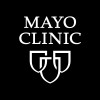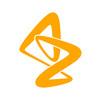
Reflux Disease Therapy in the Management of Childhood Asthma-data Entry and Analysis Only
AsthmaGastroesophageal Reflux DiseaseThere have been a number of studies which attribute causality between reflux disease and asthma. In addition, clinicians typically treat chronic asthmatics with high dose acid suppressing medications (e.g. lansoprazole). However, clinical trials only recently have shed some light on this dilemma, with recent studies suggesting that the association is not as clear. This "retrospective" analysis of a prospective study which treated mod-severe asthmatics with lansoprazole or placebo will enter the collected raw data into a database, then perform statistical analyses to determine if children with asthma treated with acid suppression improved their asthma compared to those receiving placebo.

Anthropometry in Gastroesophageal Reflux Disease and Esophageal Injury
Gastroesophageal Reflux Disease (GERD)Is waist to hip ratio (WHR), waist circumference (WC), (as markers of visceral adiposity) associated with an increase in acidic and non acidic reflux as well as systemic inflammation involving esophageal mucosa, thereby increasing esophageal injury and predisposing to subsequent development of Barrett's esophagus (BE)?

NEXIUM® in the Treatment of Moderate and Severe Erosive Esophagitis
Erosive EsophagitisReflux Esophagitis1 moreThe purpose of this study is to decide if controlling stomach acid is related to healing of erosive esophagitis after treatment with esomeprazole magnesium (NEXIUM®) 10 mg and 40 mg once daily.

Gastric Accommodation and Gastroesophageal Reflux
Gastroesophageal Reflux DiseaseGastroesophageal reflux events generally happen during relaxation of lower esophageal sphincter. This relaxation is a reflex that is triggered by gastric stimuli. The investigators hypothesize that abnormal relaxation of the gastric wall after a meal may lead to reflux events. To test this hypothesis, a study was designed to measure the gastric accommodation in patients undergoing esophageal impedance monitoring.

The Efficacy of Neiguan (P6 Point) Acupressure in Patients With Gastroesophageal Reflux Disease...
Gastroesophageal Reflux DiseaseIn recent years, there is an increasing trend in the number of patients with Gastroesophageal reflux disease (GERD). The poor response to medicine was noticed in patients with non-erosive reflux disease. According to the theory of traditional Chinese medicine, acupuncture Neiguan (P6 point) could improve the uncomfortable symptoms of the chest and upper abdomen. Therefore, the aim of this study is to investigate the clinical efficacy of Neiguan (P6 point) acupressure in patients with GERD.

Study to Evaluate the Safety and Efficacy of X842 in Patients With Reflux Esophagitis
Reflux EsophagitisThe purpose of the study is to investigate the efficacy and dose-effect relationship of X842 capsules at different dosages in the treatment of reflux esophagitis for 4 weeks in comparison with lansoprazole enteric-coated capsules.

Effect of Full-thickness Gastroplication With the GERD-X System on Atypical Gastro-esophageal-reflux-symptoms...
Atypical Gastroesophageal Reflux SymptomsObjectified Gastroesophageal Reflux DiseasePatients with atypical symptoms of objectified gastroesophageal reflux disease will be treated by full-thickness gastroplication and the effect of this intervention will be measured by questionnaires and clinical diagnostics (for example pH/MII).

Full-Thickness-Gastroplication For The Treatment Of Gastroesophageal Reflux Disease GERD
Gastroesophageal Reflux DiseaseThis is a prospective study to extensively evaluate subjective patient parameters on quality of life, reflux-symptoms, side effects, medication-use and measurements of esophageal manometry and Impedance-pH-Monitoring after Full-Thickness-Gastroplication.

A Study of Dexlansoprazole Modified Release (MR) in Gastroesophageal Reflux Disease (GERD) Participants...
Gastroesophageal Reflux DiseaseThe primary purpose of the study is to evaluate effect of Dexilant treatment among GERD participants in the Russian Federation.

The Primary Symptoms of GERD(Gastroesophageal Reflux Disease) in Chinese Outpatients in Gastroenterology...
Gastroesophageal RefluxConsecutive patients aged 18-65 years who go to the gastroenterology clinic presented with upper gastrointestinal discomfort would be included. All patients underwent upper endoscopy or an ambulatory 24-h pH(Potential Of Hydrogen) monitoring.Pathologic esophageal acid reflux was defined as the percentage total time for which a pH value < 4 was >4.2 % in the distal esophagus. Then, patients were treated with esomeprazole 20 mg twice daily for 28 days. The symptom scores were measured by the frequency score multiplied by the severity scores of the predominant symptom before and at the end of the treatment, and the " PPI test " was defined as positive if the overall scores of the predominant dyspeptic symptom in the fourth week decreased by >50 % compared with those of the baseline. GERD is defined by either 24-hour impedance-pH monitoring or positive PPI(proton pump inhibitor) test or positive result from endoscopy. The percentage of each symptom of GERD in the symptom questionnaire in Chinese outpatients in Gastroenterology department will be calculated. The symptom of the highest percentage will be the primary symptom.
